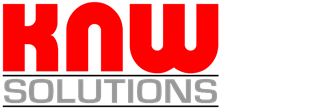
Are we spending lots of money and effort for nothing?
Are we just propping up the nanny-state mentality of the millennials?
These are unfortunately the attitudes of some in this post-fact world in which we live where an opinion is substituted for, or believed to be, a fact.
Lets have a look at some scary things: facts.
Safe Work Australia undertook a study last year to look to the statistics on the incident of Workers’ Compensation claims from 2000-2016. https://www.safeworkaustralia.gov.au/system/files/documents/1801/awcs_2015-16_report-20171023_v3_0.pdf
Now as we both know, the Workplace Health & Safety “movement” really hit its straps late in 2000 and has had the benefit of media coverage, zeitgeist communication and increasing attention from those good fellows at various SafeWork and WorkCover instrumentalities.
Whilst the figures I have focussed on show a dramatic drop in Serious Claims and a correlation can be drawn between this drop and the focus on safety, its by no means a proven fact – however, there must be some causation correlation between the two.
The Serious Claims are defined in this report – and subsequently this table – as an accepted workers’ compensation claim for an incapacity that results in a total absence from work of one working week or more, excluding compensated fatalities.
What this table is not showing are the “small” claims and issues that also can and will result in time off, fines, increases in our Workers Compensation premiums, so these facts are merely scratching the surface.
We all spend a lot of time, money and sleepless nights worrying over the safety of our business and the staff within. The question we all ask is: are we spending our dollars wisely? Is any of this legislation and compliance actually making a difference?
Again, if we listen to the common complains, we worry that this money is being wasted – the facts tend to dispel this assertation.
Here is a summary of the table on Page 23 of the Safe Work Australia Australian Workers’ Compensation Statistics 2015-2026 here, by the way is the link to the full report:
This table – not reproduced in full – shows a marked decline in the number of serious claims against Workers Compensation across Australia.

By whatever metric you choose, there has been a significant reduction in serious claims over a period of intense public and business focus on OHS & WHS issues. To this, we can reasonably assert that the implementation of these measures have reduced not only claims but significant loss of work hours.
Quite apart from the legal requirements to be compliant with the WHS act, for which non-compliance itself results in significant dollars flying out of our business accounts and bottom line, we have a duty of care for our staff.
If we can save 36% of the hours lost to business from serious claims, what does that mean to your bottom line. “Do the maths” – yes “maths” – on your own business. Look to how many days you’ve had off in the last year due to injuries that could have been avoided with staff being trained in and aware of just how you want them to act within the business? Having the money you spend on their wages, the increased insurance premiums – what does that do to your bottom line?
You haven’t lost time? Great work & well done… so what is it worth to you to ensure you avoid the fines and keep your safety record intact? Will training and having documented systems and policies help?
Wouldn’t it be great if you could provide your staff with all this knowledge, be able to track their understanding and be able to show you have complied with your legal requirements?
Our research showed that the biggest issue for most business owners is the time it takes to create these processes and policies.
That led us to develop revolutionary software that will gives you the ability to create programmes and policies that are applicable to YOUR business by taking 15 minutes and 5 steps.
Simple. Common. Sense.
For more information or a complimentary demonstration, please give me a call on (02) 9011 8100






